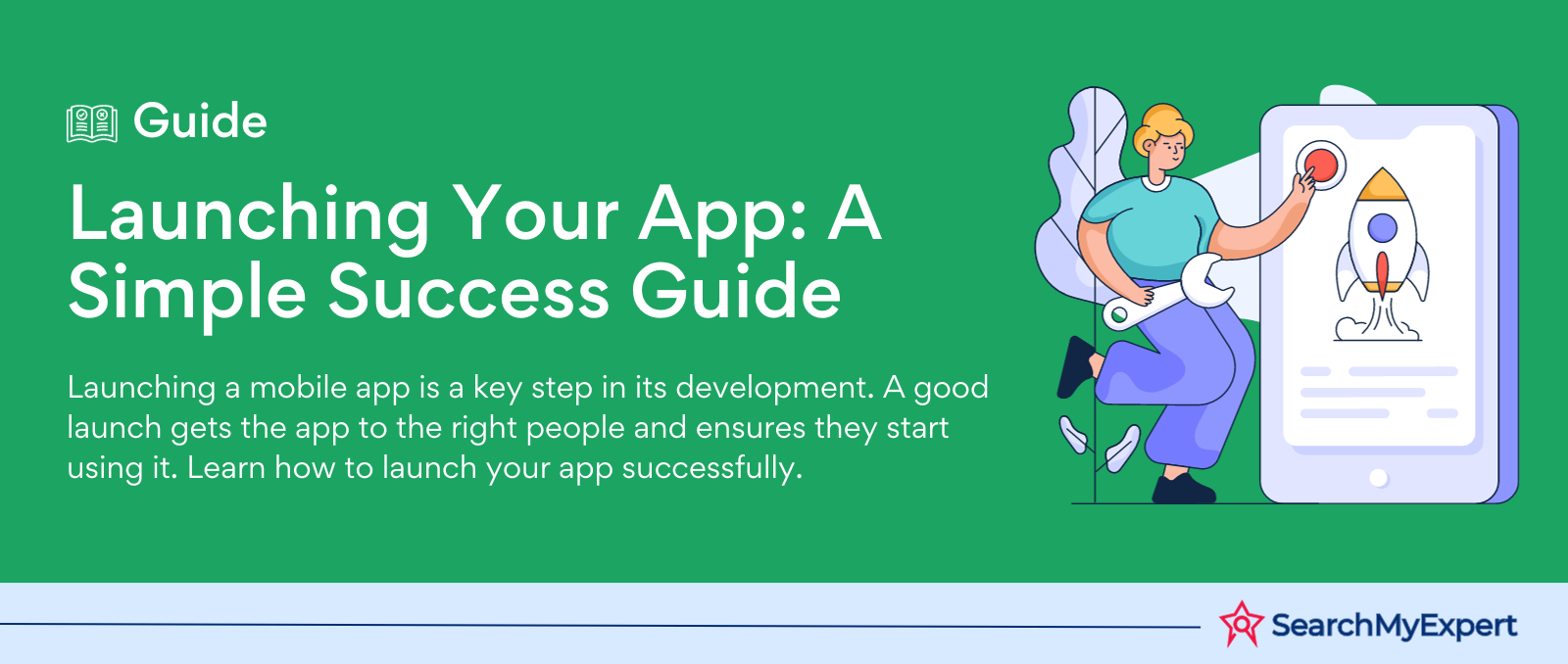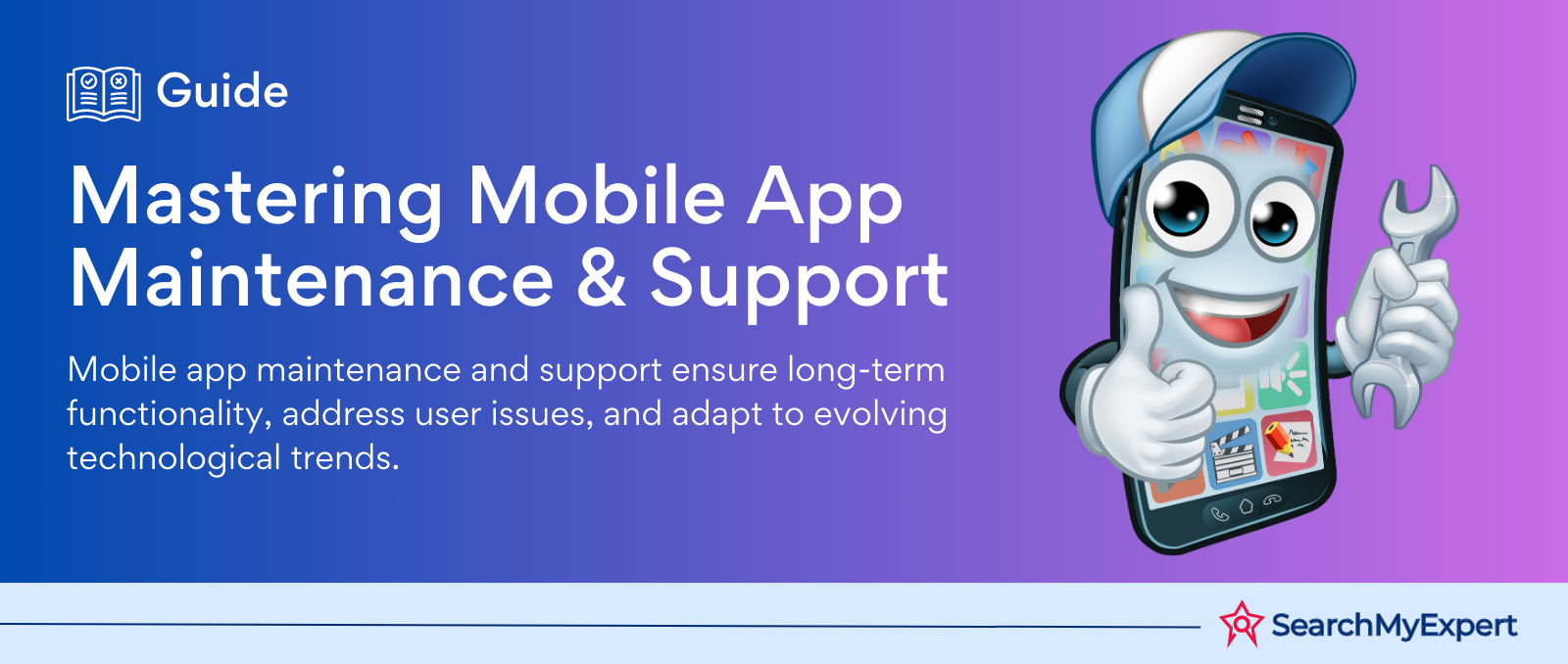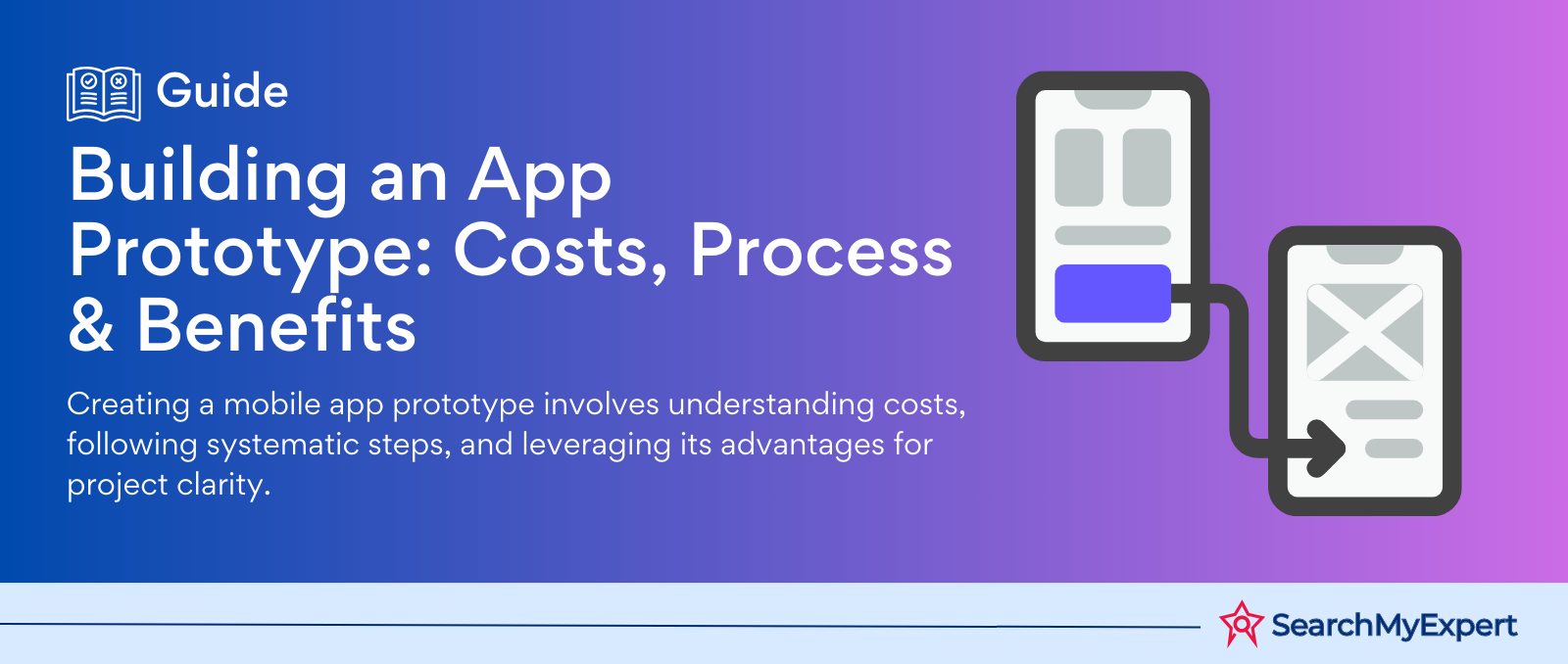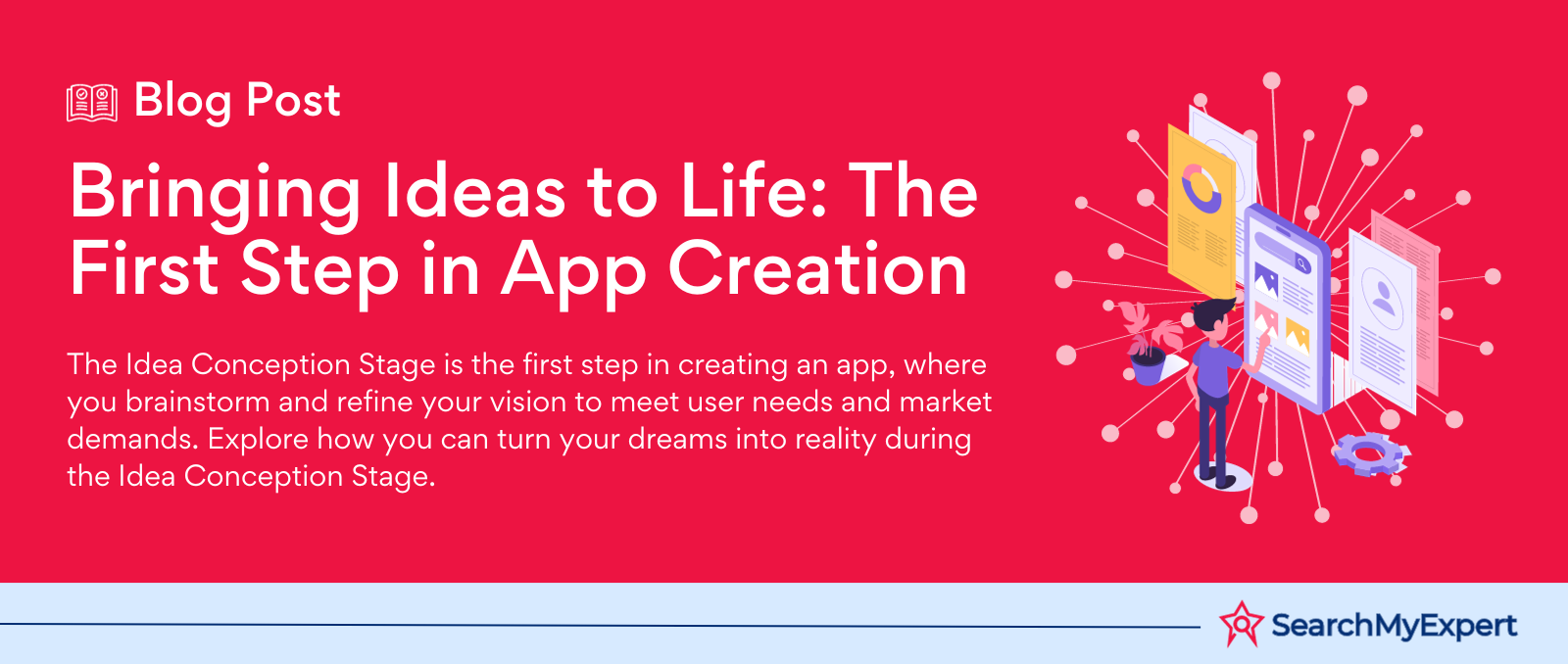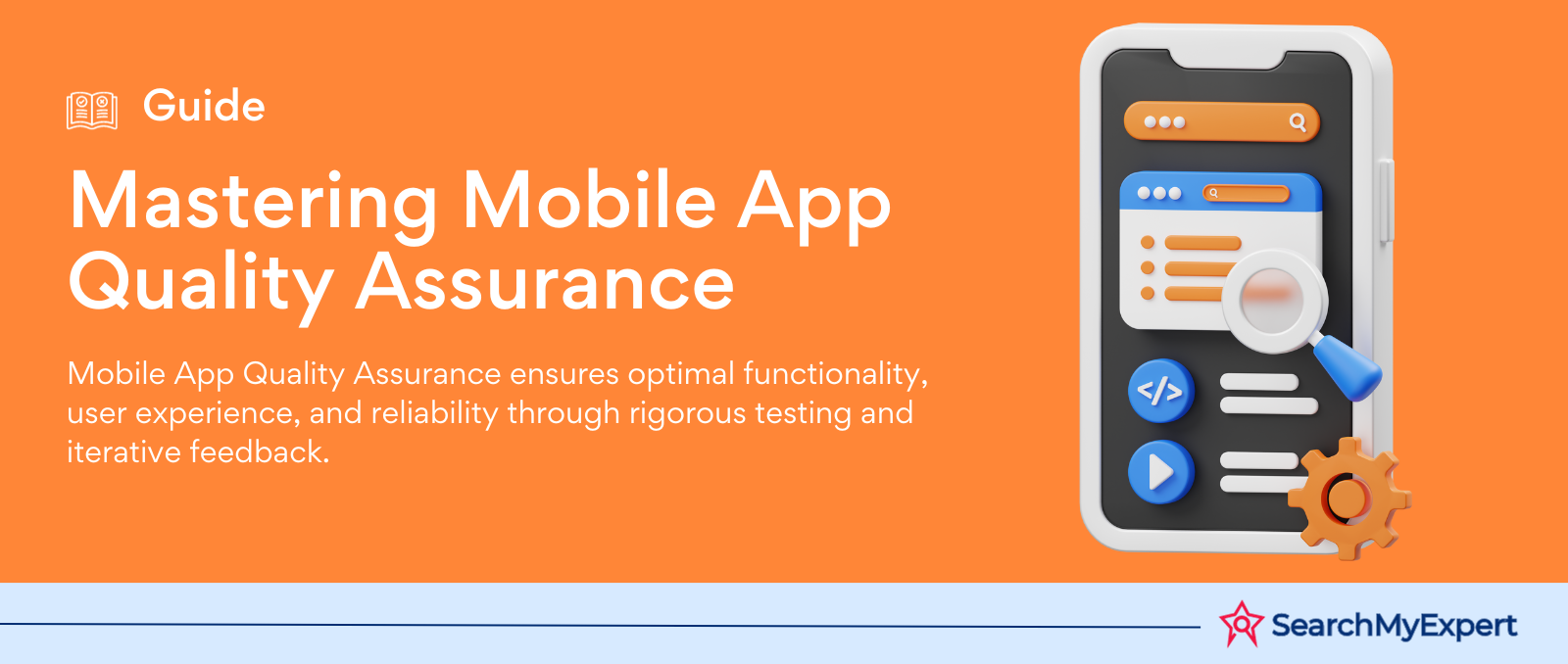Hey there, awesome visitor! 👋 Our website is currently undergoing some nifty upgrades to serve you even better. But don't worry, we'll be back before you can say "SearchMyExpert rocks!"
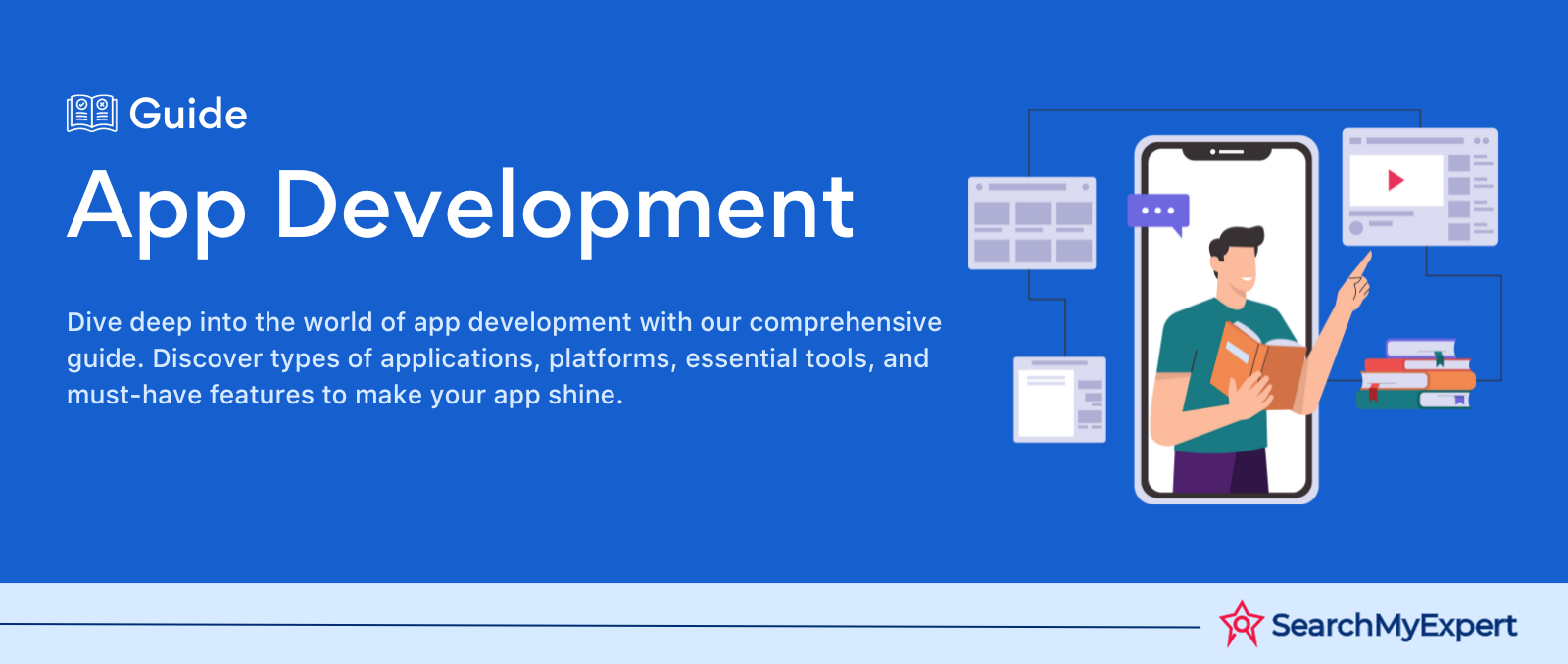
What is An App Development?
An App development refers to the process of creating computer software applications, which are designed to perform a specific function or set of functions. These applications can run on various platforms such as desktop computers, mobile devices (e.g., smartphones and tablets), and web browsers.
In an era driven by technology and constant digital evolution, app development has emerged as the beating heart of this revolution. From your morning alarms to your bedtime stories, there's an app for virtually everything. The transformation from mere utilities on our mobile devices to indispensable tools in our daily lives has made app development a crucial subject in modern digital discourse.
Apps aren't just about entertainment or convenience; they have significantly altered the way businesses operate, students learn, and people connect. This interweaving of apps into our daily routines showcases the sheer power of good software, made possible by the meticulous process of app development.
Types of Applications
1. Mobile Apps
The world at your fingertips, quite literally. Mobile apps are tailored for handheld devices like smartphones and tablets. They can be downloaded from app stores specific to the device's operating system (like Google Play Store for Android or Apple App Store for iOS). Read More...
Example: Instagram, a photo-sharing platform, started as a mobile app before expanding its accessibility to web platforms.
2. Web Apps
Web apps are accessible through web browsers and aren't dependent on a specific operating system. They offer a universal experience across devices. The beauty of web apps is their adaptability; they can run on any device with a web browser. Read More...
Unique Case Study: Google Docs revolutionized the way we approach document editing and sharing by offering a seamless web app experience, which enables multiple users to work simultaneously.
3. Hybrid Apps
Blending the best of both mobile and web apps, hybrid apps can be installed on a device and run through a web browser. They're typically built using HTML, CSS, and JavaScript and then wrapped in a native container. ReadMore...
Example: Evernote, the note-taking application, is a hybrid. While it offers a native-like experience, it also runs within a browser.
4. Progressive Web Apps (PWAs)
PWAs are a leap forward, combining the advantages of modern browsers with the benefits of mobile experience. They can be pinned to the home screen, send push notifications, and even work offline. Read More...
Unique Case Study: Starbucks’ PWA ensures customers can browse the menu, customize orders, and add to the cart even without an internet connection.
5. Desktop Apps
Desktop applications are designed for specific desktop environments. Unlike web apps, they need to be manually installed but can leverage the full power of the computer they run on. Read More...
Example: Microsoft Word is a desktop application that's been a cornerstone in word processing for decades.
In-depth Detail: Mobile vs. Web
| Feature | Mobile Apps | Web Apps |
|---|---|---|
| Accessibility | Device-specific | Any device with a browser |
| Installation | Via app stores | Directly from the web |
| Updates | Requires periodic manual updates from app stores | Updated in real-time without user intervention |
| Performance | Often faster due to native device features | Dependent on internet speed and browser performance |
| Performance | Often faster due to native device features | Dependent on internet speed and browser performance |
Benefits of Mobile Apps:
- Superior performance
- Enhanced user experience with device-specific features
- Offline functionalities
Challenges of Mobile Apps:
- Needs frequent updates
- Compatibility issues across different devices
App Development Platforms
1. iOS
Apple's operating system, iOS, is exclusively tailored for Apple devices like iPhones, iPads, and iPod Touch. It's known for its high-quality performance, impeccable design, and stringent app approval process. Read More...
Unique Example: FaceTime is an iOS exclusive app that provides video and audio calls between Apple devices.
Benefits:
- Highly secure with consistent updates.
- Unified device ecosystem ensures apps perform well across all Apple devices.
- High monetization potential for developers due to Apple's affluent user base.
Challenges:
- Stringent app approval process can delay app availability.
- Limited customization options.
2. Android
Powered by Google, Android is the world's most widespread mobile OS, thanks to its open-source nature and customization capabilities. Android apps are predominantly distributed via Google Play Store.
Unique Case Study: Android's open-source nature has led to diverse device variations, from high-end Samsung Galaxy phones to affordable models, catering to various demographics. Read More...
Benefits:
- Flexible and customizable.
- Wider user reach due to the diverse range of devices.
- Easier app approval process.
Challenges:
- Fragmentation issues: Different device specs and OS versions can affect app performance.
- Generally earns less revenue per user compared to iOS.
3. Windows
Windows, developed by Microsoft, is prevalent in desktop environments but also powers mobiles and tablets. Windows Store serves as its app distribution channel. Read More...
Example: Microsoft Excel, a potent tool for spreadsheets, shines exceptionally on Windows due to its extensive features.
Benefits:
- Seamless integration with Microsoft's suite of tools.
- Unified OS for mobile and desktop.
- Secure and stable.
Challenges:
- Limited mobile market share.
- Fewer apps compared to Android and iOS.
4. MacOS
Apple's operating system, iOS, is exclusively tailored for Apple devices like iPhones, iPads, and iPod Touch. It's known for its high-quality performance, impeccable design, and stringent app approval process. Read More...
Unique Example: FaceTime is an iOS exclusive app that provides video and audio calls between Apple devices.
Benefits:
- High-speed performance with less vulnerability to malware.
- Seamless integration with other Apple devices and services.
- High-quality software available.
Challanges:
- Limited to Apple's Mac computers.
- Less software variety compared to Windows.
5. Cross-platform
Rather than writing code for each platform separately, cross-platform development tools allow developers to write once and deploy across multiple OSes. Read More...
Example: Games like "Among Us" are available across Android, iOS, and Windows, indicating a cross-platform approach.
Benefits:
- Cost-effective development.
- Faster time-to-market.
- Consistent app experience across platforms.
Challanges:
- Might not fully leverage unique features of each platform.
- Potential performance issues.
In-depth Detail: Mobile vs. Web
| Features | iOS | Android | Windows | MacOS | Cross-platform |
|---|---|---|---|---|---|
| Market Share | Medium | High | Medium (Desktop) Low (Mobile) | Medium | N/A |
| Customization | Low | High | Medium | Low | High |
| App Variety | High | High | Medium | Medium | Depends on tool |
| Development Cost | High | Medium | Medium | High | Medium |
| Monetization Potential | High | Medium | Medium | High | Medium |
App Development Stages
1. Idea Conception
The genesis of any application is the idea behind it. This stage requires brainstorming, understanding the target audience, and defining the problem the app aims to solve. Read More...
Unique Example: Airbnb's conception came from its founders renting out their loft to make some extra money. This led to the idea of a global platform for home-sharing.
2. Design & Prototyping
Once the idea is defined, visualizing its functionality becomes crucial. This stage involves wireframing, creating mock-ups, and prototyping. The prototype acts as a preliminary version of the app, showcasing its design and functionality. Read More...
Unique Case Study: Snapchat initially focused on person-to-person photo sharing. The prototype showcased the unique feature of ephemeral messaging, setting the stage for its later features.
3. Development
Here, the actual coding begins. Depending on the platforms chosen, developers use different programming languages and tools to bring the app to life. This phase also involves integrating APIs, databases, and ensuring that the app's architecture is robust and scalable. Read More...
In-depth Detail: Instagram was initially developed for iOS using Objective-C. As it gained popularity, an Android version was launched, which required a different development approach using Java.
4. Testing & QA
Before launching, it's paramount to ensure the app is free from bugs and glitches. Quality Assurance (QA) teams rigorously test the application on different devices and under various conditions to ensure optimal performance. Read More...
Unique Example: WhatsApp's 'end-to-end encryption' feature underwent intensive testing to ensure message security across all transmissions.
5. Deployment
Once assured of the app's quality, it's time for its deployment on respective platforms. This involves submitting the app to stores like Apple App Store or Google Play, adhering to their guidelines. Read more....
Unique Case Study: Flappy Bird, after its deployment, became a sensation. However, it was later pulled down by its developer due to its addictive nature and the unintended negative impact it had on users.
6. Maintenance & Updates
Post-launch, apps require regular maintenance to fix unforeseen bugs, update content, or introduce new features based on user feedback. Read more...
Example: Facebook regularly updates its app to introduce new features, enhance user experience, and ensure the platform's security.
Development Timeline
| Stages | Duration | Key Activities |
|---|---|---|
| Idea Conception | 1-4 weeks | Brainstorming, Market Research |
| Design & Prototyping | 2-8 weeks | Wireframing, Mock-up creation, User feedback on prototype |
| Development | 3-6 months | Coding, API integration, Backend setup |
| Testing & QA | 4-12 weeks | Bug fixing, Performance testing |
| Deployment | 1-3 weeks | App store submissions, Initial marketing |
| Maintenance & Updates | Ongoing | User feedback, New features, Bug fixes |
Benefits of a Structured Development Process:
- Ensures a thorough understanding of the app's purpose.
- Allows for iterative feedback, leading to a better final product.
- Minimizes post-launch issues due to rigorous testing.
Challenges in Development:
- Evolving user expectations can demand mid-course changes.
- Ensuring seamless functionality across platforms.
- Adhering to app store guidelines during deployment.
App Development Tools & Technologies
1. Java
Java is a versatile and object-oriented programming language predominantly used for Android app development. It's known for its portability across platforms, thanks to the 'write once, run anywhere' principle. Read More...
Unique Example: LinkedIn's Android app leverages Java for its robust backend functionalities.
2. Swift
Swift is Apple's brainchild, designed for developing apps on iOS, MacOS, watchOS, and more. It offers performance efficiency and is inherently less prone to bugs. Read More...
Unique Case Study: The popular game Monument Valley, available on iOS, showcases the graphical prowess of Swift.
3. Kotlin
Kotlin, a modern alternative to Java, has been endorsed by Google as a first-class language for Android development. It's concise, expressive, and inter-operates fully with Java. Read More...
Example: Pinterest shifted to Kotlin for its Android app, citing increased developer productivity and app performance.
4. React Native
Developed by Facebook, React Native facilitates cross-platform mobile app development using JavaScript. It allows for faster development by reusing code across platforms. Read more..
In-depth Detail: Instagram adopted React Native, which enabled them to implement features on both Android swiftly and iOS.
5. Flutter
Flutter, Google's UI toolkit, allows for crafting natively compiled applications from a single codebase. It's known for its fast performance and expressive UI. Read more...
Unique Example: Google Ads uses Flutter, delivering a seamless experience across both major mobile platforms.
6. JavaScript
JavaScript is the backbone of web applications, enabling dynamic interactivity. It's versatile, being used both client-side and server-side. Read more..
Example: Netflix relies on JavaScript to provide interactive features and adapt content based on user preferences.
7. HTLM5 & CSS3
HTML5 and CSS3 are foundational technologies for web app development. While HTML5 structures the content, CSS3 styles and animates it, creating visually appealing web apps. Read more...
Unique Case Study: The New York Times' website offers a rich user experience, driven by advanced features of HTML5 and CSS3.
8. Node.js
Node.js is a runtime environment enabling JavaScript to run server-side. It's known for its fast performance and scalability. Read more...
In-depth Detail: PayPal transitioned to Node.js, reducing page response times and simultaneously handling more requests.
9. Angular
Angular, a product by Google, is a platform and framework for building client-side applications using HTML and TypeScript. Read more...
Unique Example: Google Cloud Source Repositories utilize Angular for its frontend development, providing a sleek interface for users.
10. Docker
Docker is a platform used for developing, shipping, and running applications inside containers. It ensures that the app runs uniformly across different computing environments. Read more...
Unique Case Study: Visa, the global payments giant, adopted Docker to enable rapid application development and scaling.
Tools & Technologies Comparison:
| Tools | Usage | Advantages |
|---|---|---|
| Java | Android Development | Platform independence |
| Swift | iOS Development | Performance efficiency, Safety |
| Kotlin | Android Development | Expressive, Interoperable with Java |
| React Native | Cross-Platform Mobile Development | Code reuse, Community support |
| Flutter | Cross-Platform Mobile & Web Development | Fast performance, Expressive UI |
| JavaScript | Web Development | Versatile, Large ecosystem |
| HTML5 & CSS3 | Web Development | Multimedia support, Advanced styling |
| Node.js | Server-side Development | Fast, Scalable |
| Angular | Web Application Development | Two-way data binding, Modularity |
| Docker | Application Containerization | Consistency across environments, Scalability |
Benefits of Using Advanced Tools:
- Ensures faster development and deployment cycles.
- Greater code efficiency and reusability.
- Enhanced app performance and user experience.
Challenges:
- Keeping up with the rapid evolution of tools and technologies.
- Ensuring compatibility and interoperability between tools.
App Development Features & Functionalities
1. User Authentication
This provides secure access to the app, usually requiring a username and password. It safeguards user data and ensures a personalized user experience. Read more...
Unique Example: FaceID on iPhone apps uses advanced biometrics for user authentication, ensuring heightened security.
2. Push Notifications
Push notifications engage users by providing timely updates, reminders, or promotional offers. It's a direct channel of communication with the user. Read more...
Case Study: Duolingo, the language learning app, effectively uses push notifications to remind users to practice daily.
3. In-app Purchases
This feature allows users to purchase virtual goods or additional features within the app, often serving as a revenue stream for developers. Read more...
Unique Example: Candy Crush Saga offers power-ups and extra lives through in-app purchases, enhancing gameplay and driving revenue.
4. Geolocation
Geolocation services pinpoint the user's location, offering tailored services or content based on it. Read more...
In-depth Detail: Uber uses geolocation to match riders with nearby drivers, ensuring quick pickups.
5. Social Media Integration
By linking apps with social media platforms, users can easily share content, invite friends, or use their social profiles for quicker sign-ups. Read more...
Unique Case Study: Spotify allows users to share their playlists on Facebook, increasing app visibility and user engagement.
6. Chat & Messaging
Integrated chat functions foster communication, whether it's user-to-user or user-to-support. Read more...
Example: WhatsApp, focusing solely on messaging, offers end-to-end encrypted chats, ensuring user privacy.
7. Payment Gateways
These are integrated systems that process payments within the app, essential for e-commerce apps or any app offering paid services. Read more...
In-depth Detail: Amazon integrates multiple payment gateways, from credit cards to its own Amazon Pay, ensuring seamless transactions.
8. AR & VR Features
Augmented Reality (AR) and Virtual Reality (VR) enhance user experience by offering immersive interactions. Read more...
Unique Example: IKEA's AR app lets users virtually place furniture in their homes before purchasing, ensuring a good fit.
9. Multi-language Support
Apps catering to a global audience often include multi-language support, ensuring usability across linguistic barriers. Read More....
Case Study: Duolingo, offering courses in numerous languages, provides interface options in over 20 languages, catering to its diverse user base.
10. Offline Mode
Offline mode ensures app functionality even without an active internet connection, enhancing user experience. Read more...
Unique Example: Google Maps allows users to download specific map areas, ensuring navigation even without connectivity.
Features & Functionalities Comparison:
| Features | Importance | Benefits |
|---|---|---|
| User Authentication | High | Security, Personalized experience |
| Push Notifications | Medium | User engagement, Direct communication |
| In-app Purchases | Depends on app nature | Revenue generation, Enhanced user experience |
| Geolocation | High for location-based apps | Tailored services, Real-time data |
| Social Media Integration | Medium | Increased visibility, Seamless sign-ups |
| Chat & Messaging | Medium-High | Direct communication, User support |
| Payment Gateways | High for e-commerce apps | Secure transactions, User convenience |
| AR & VR Features | Rising importance | Immersive experience, Enhanced interactivity |
| Multi-language Support | Medium-High for global apps | Wider reach, Inclusivity |
| Offline Mode | Medium | Uninterrupted access, Convenience |
Benefits of Incorporating Advanced Features:
- Offers a richer, more interactive user experience.
- Can drive user engagement and retention.
- Potential for higher revenue through added functionalities.
Challenges:
- Keeping the app lightweight despite multiple features.
- Ensuring all features are seamlessly integrated and bug-free.
- Striking a balance between adding features and maintaining user-friendliness.
Conclusion
Navigating the World of App Development The realm of app development is ever-evolving, shaped by innovations in technology and shifting user preferences. It begins with the inception of a groundbreaking idea and traverses through the intricacies of design, development, and deployment. The road doesn't end there; regular maintenance and updates ensure that the app remains relevant and functional.
Choosing the right type of application – be it mobile, web, hybrid, progressive web, or desktop – forms the foundation. The platform selection, whether iOS, Android, Windows, MacOS, or cross-platform, will determine its accessibility and user base.
Equipping oneself with the right tools and technologies is akin to a craftsman selecting the best instruments. Java, Swift, Kotlin, and other technologies not only dictate the performance and stability of the app but also influence the development experience.
Yet, an app's essence is captured by its features and functionalities. From the fundamental user authentication to the cutting-edge AR & VR integrations, these features determine how users interact with and perceive the app. They are the face and functionality of all the coding and development that occurs behind the scenes.
In summary, app development is a meticulous blend of art and science, imagination and technique, creativity and logic. As the digital age progresses, apps will continue to be at the forefront, making lives easier, businesses more efficient, and entertainment more accessible. It's an exciting journey, one that promises endless possibilities and innovations. As developers and consumers, we're all aboard this transformative journey, eager to witness and partake in what the future holds.
Stand Out in the mobile world with these Mobile App Developers.
Application Development FAQs
-
What is the difference between native and cross-platform app development?
Native app development involves creating apps for a specific platform, like iOS or Android. These apps are optimized for the platform's hardware and software, ensuring top-notch performance.
Cross-platform development, on the other hand, allows one codebase to be used for multiple platforms. While it's faster and more cost-effective, there might be performance trade-offs.
-
How do I decide between a mobile app and a web app for my business?
This decision often depends on your business goals and target audience. If you aim for a broad user base without platform restrictions, a web app might be best.
However, if you want to leverage device-specific features like camera or GPS, a mobile app would be more suitable.
-
How often should I update my app?
Regular updates are crucial for incorporating new features, fixing bugs, and ensuring compatibility with the latest OS versions.
Typically, minor updates can be monthly, while feature releases can be quarterly. However, user feedback and industry standards should guide the frequency.
-
How do I ensure the security of my app?
App security can be bolstered by encrypting data, using secure code practices, regularly updating and patching software, and employing stringent user authentication methods.
-
What's the significance of UI/UX in app development?
UI (User Interface) and UX (User Experience) are vital as they determine the app's look and feel. A good UI/UX ensures the app is intuitive, user-friendly, and engaging, directly impacting user retention and satisfaction.
-
How do cloud services fit into app development?
Cloud services offer storage, databases, servers, and networking, allowing apps to run efficiently, scale quickly, and store vast amounts of data. Popular platforms include AWS, Google Cloud, and Azure.
-
What role does AI play in modern app development?
AI (Artificial Intelligence) can enhance apps by introducing features like chatbots, personalized recommendations, voice recognition, and more. It offers smarter, more personalized user interactions.
-
Can I monetize a free app?
Absolutely! Free apps can generate revenue through in-app advertisements, affiliate marketing, in-app purchases, subscription models, or even by selling user data (with user consent and within legal bounds).
-
How do I choose the right development tool or technology for my app?
This depends on your app's nature, target audience, and desired features. Research, consultation with development experts, and understanding your project scope are essential steps.
-
What's the importance of beta testing in app development?
Beta testing allows a select group of users to test the app before its official release. It's crucial for identifying bugs, gathering user feedback, and ensuring the app meets user expectations.
Other Related Blogs
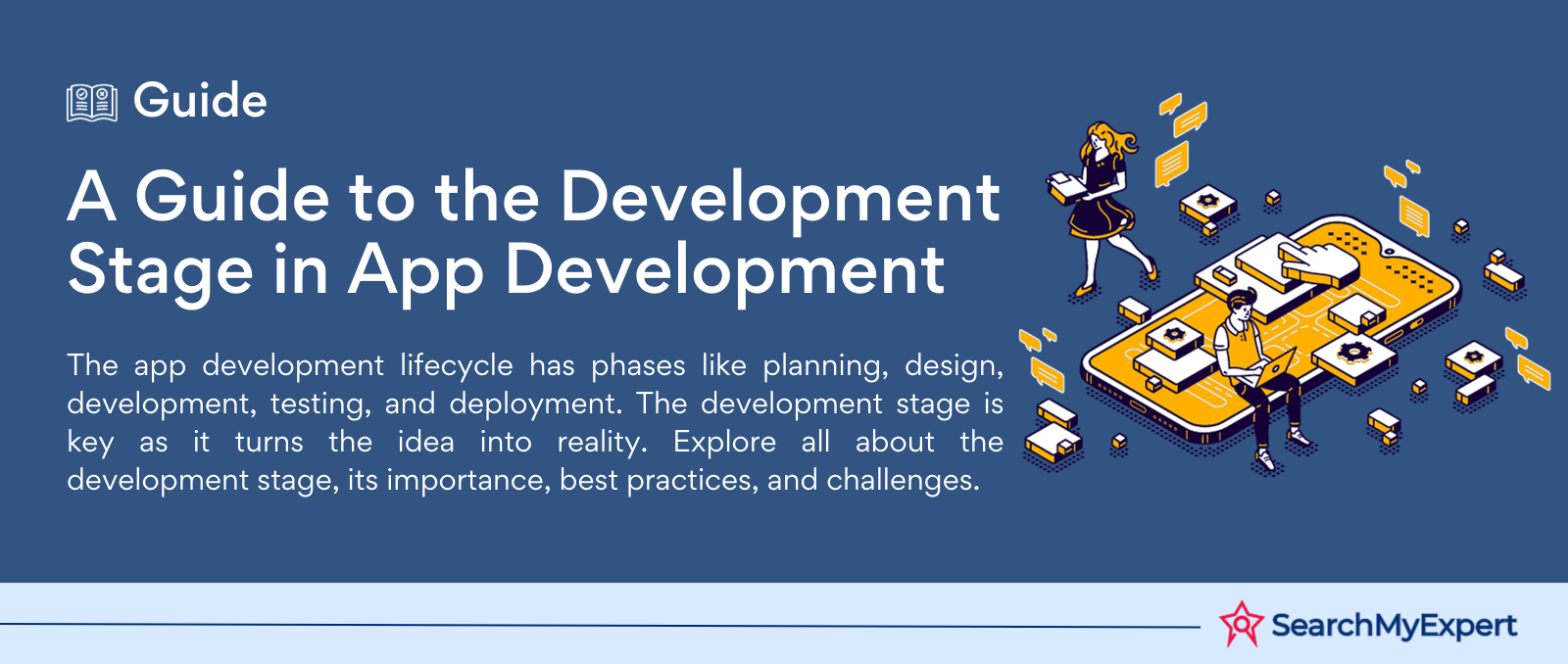
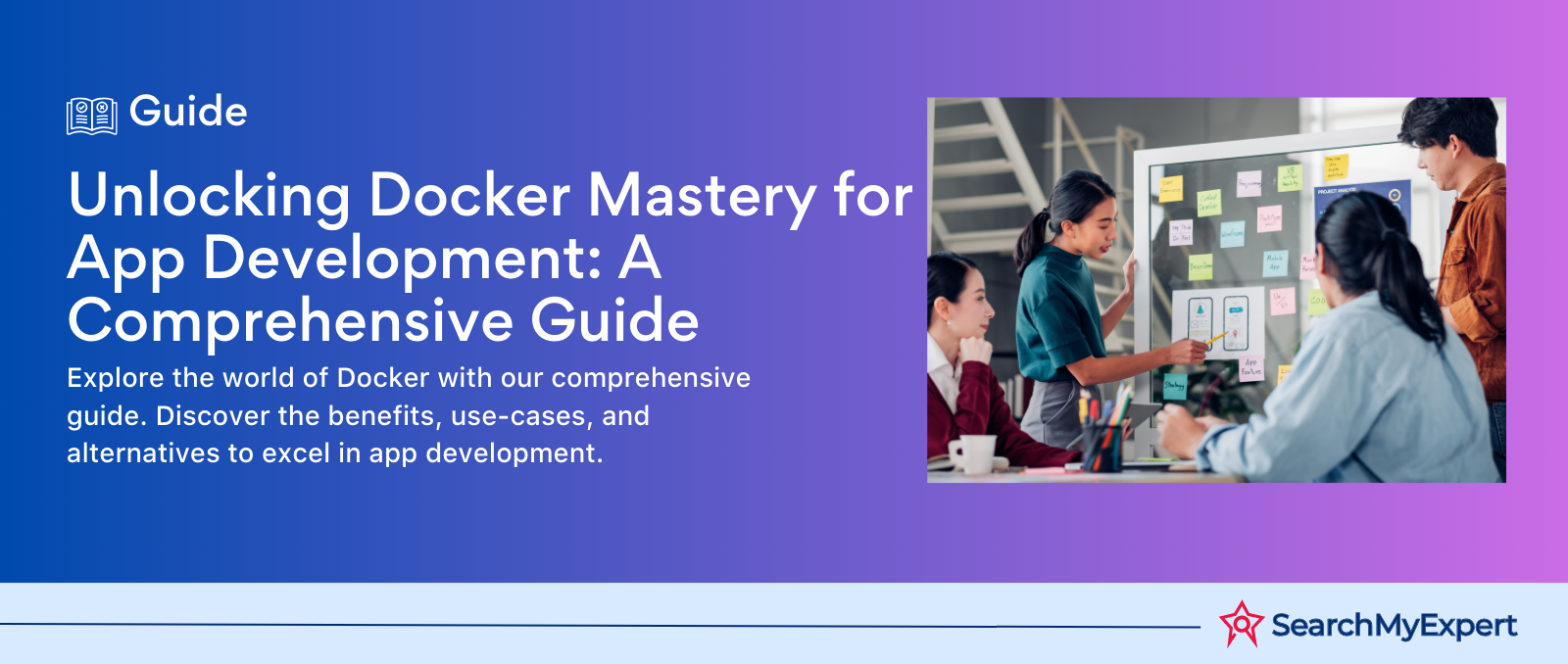
Mastering Docker for App Development: A Comprehensive Guide to Benefits, Use-Cases, and Alternatives
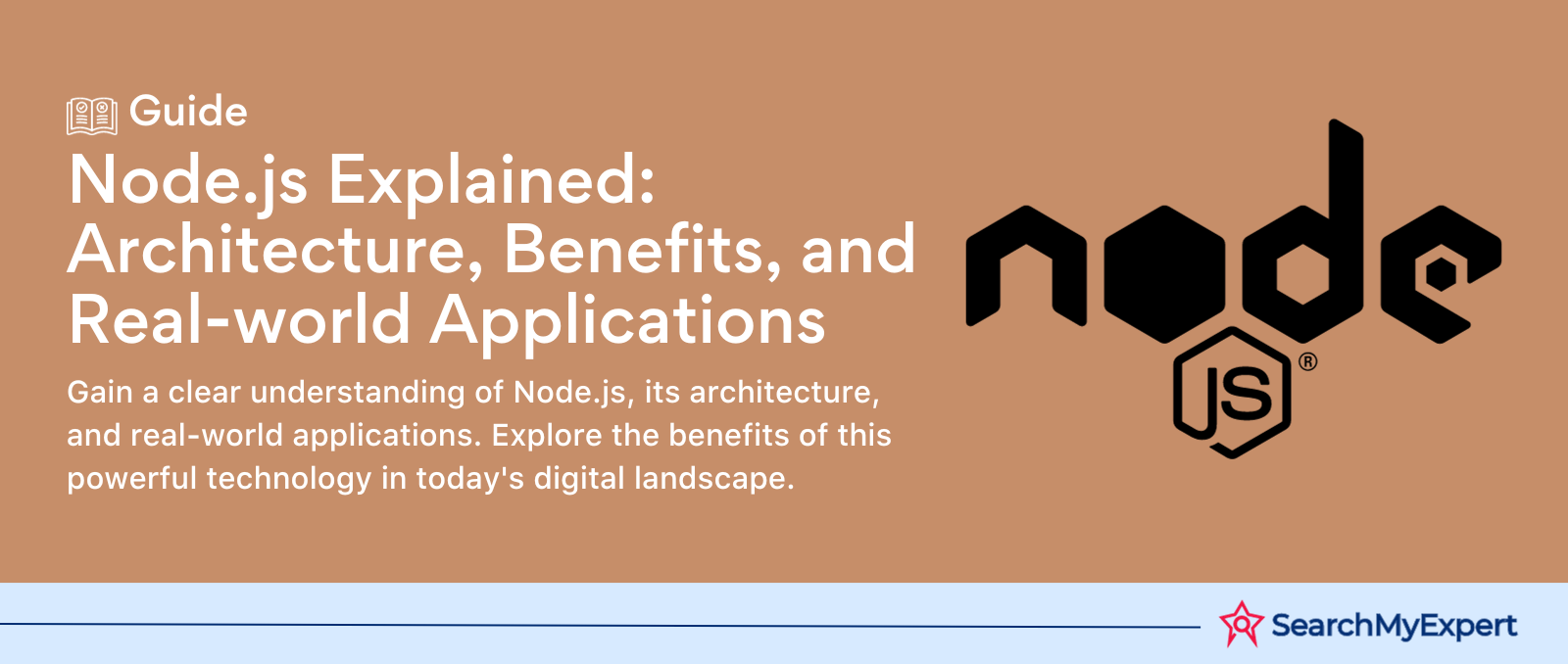
STAY UP TO DATE
GET PATH'S LATEST
Receive bi-weekly updates from the SME, and get a heads up on upcoming events.
Contact Us
We will get back to you as soon as possible.
Please try again later.


Find The Right Agencies
SearchMyExpert is a B2B Marketplace for finding agencies. We help you to describe your needs, meet verified agencies, and hire the best one.
Get In Touch
WZ-113, 1st Floor, Opp. Metro Pillar No- 483, Subhash Nagar - New Delhi 110018
About Us
For Agencies
Benefits Of Listing With Us
Submit An Agency
Agency Selection Criteria
Sponsorship
For Businesses
Agencies Categories
Trends Articles
FAQs
Find The Right Agencies
SearchMyExpert is a B2B Marketplace for finding agencies. We help you to describe your needs, meet verified agencies, and hire the best one.
About Us
For Agencies
List Your Agency
Benefits Of Listing
Agency Selection Criteria
Sponsorship
Get In Touch
WZ-113, 1st Floor, Opp. Metro Pillar No- 483, Subhash Nagar - New Delhi 110018
contact@searchmyexpert.com
Copyright © 2023 · Skillpod Private Limited · All Rights Reserved - Terms of Use - Privacy Policy


